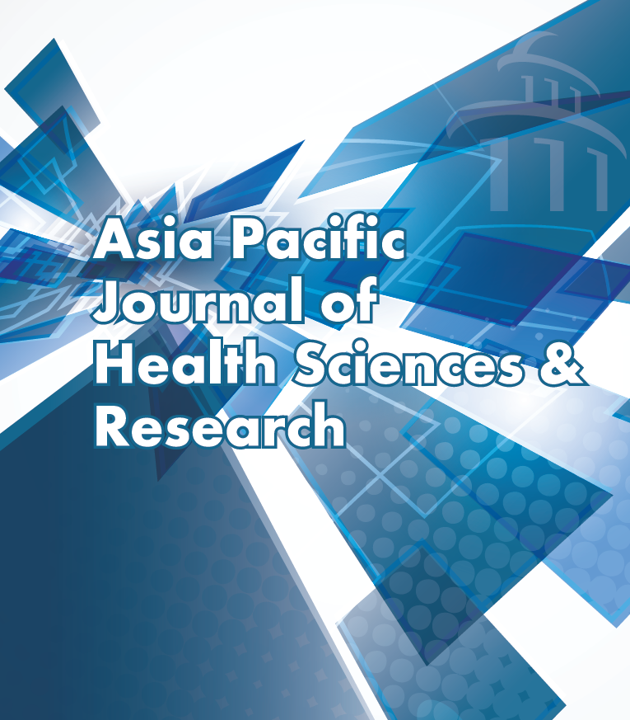Abstract
Background: Premenstrual syndrome (PMS) is a collection of physical and psychological symptoms in relation to the menstrual cycle. Little is known about the prevalence and attitude of pre-menstrual syndrome among women of reproductive age in Sibu, Sarawak, Malaysia.
Materials & Methods: A cross-sectional study was carried out during the first quarter of 2017. A total of 255 women of reproductive age from both urban and rural areas of Sibu were voluntarily participated and faceto-face interview was undertaken.
Results: The prevalence of PMS was 44.3% (95% CI: 38.1%, 50.6%) and more than half of the respondents (56.1%; 95% CI: 49.8%, 62.3%) had positive attitude towards PMS. Although age, ethnicity, residence and education status were found to have significant association with having positive history of PMS, none of them were significantly related to the attitude towards PMS. The common symptoms of PMS were increased appetite, acne, mood swing, irritability and breast tenderness.
Conclusion: A significant portion of women in reproductive ages had positive history of PMS.
References
Cheng SH, Shih CC, Yang YK, Chen KT, Chang YH, Yang YC. Factors associated with premenstrual syndrome - a survey of new female university students. Kaohsiung J Med Sci. 2013; 29(2): 100-105.
Ogebe O, Abdulmalik J, Bello-Mojeed MA, Holder N, Jones HA, Ogun OO, Omigbodun O. A comparison of the prevalence of premenstrual dysphoric disorder and comorbidities among adolescents in the United States of America and Nigeria. J Pediatr Adolesc Gynecol. 2011; 24(6): 397-403
Lee LK, Chen PCY, Lee KK, Kaur J. Menstruation among adolescent girls in Malaysia: a cross-sectional school survey. Singapore Med J. 2006; 47(10): 869-874.
Qiao M, Zhang H, Liu H, Luo S, Wang T, Zhang J, Ji L. Prevalence of premenstrual syndrome and premenstrual dysphoric disorder in a populationbased sample in China. Eur J Obstet Gynecol Reprod Biol. 2012; 162(1):83-86.
Potter J, Bouyer J, Trussell J, Moreau C. Premenstrual Syndrome Prevalence and Fluctuation over Time: Results from a French PopulationBased Survey. J Women Health. 2009; 18(1): 31-39.
Sadler C, Smith H, Hammond J, Bayly R, Borland S, Panay N, Crook D, Inskip H, Southampton women’s survey study group. Lifestyle factors, hormonal contraception, and premenstrual symptoms: the United Kingdom Southampton Women’s Survey. J Womens Health. 2010; 19(3): 391-396.
Petta CA, Osis MJD, de Pádua KS, Bahamondes L, Makuch MY. Premenstrual syndrome as reported by Brazilian women. Int J Gynaecol
Obstet. 2010; 108(1): 40-43.
Lete I, Dueñas JL, Serrano I, Doval JL, Martínez-Salmeán J, Coll C, et al,. Attitudes of Spanish women toward premenstrual symptoms, premenstrual syndrome and premenstrual dysphoric disorder: results of a nationwide survey. Eur J Obstet Gynecol Reprod Biol. 2011; 159(1): 115-118.
Freeman EW. Premenstrual syndrome. Available at: https://www.glowm.com/resources/glowm/cd/pages/v1/v1c023.html,
Accessed 20 April 2017.
Jain H, Parekh A. Prevalence of premenstrual syndrome in married and unmarried females of 18-28 years of age. Indian Journal of Physical Therapy. 2015; 3(2): 56-61.
Padhy SK, Sarkar S, Beherre PB, Rathi R, Panigrahi M, Patil PS. Relationship of premenstrual syndrome and premenstrual dystrophic disorder with major depression: relevance to clinical practice. Indian J Psychol Med. 2015; 37(2): 159-164.
Sitwat Z, Abid A, Arif A, Basit A, Anwar QM. Premenstrual syndrome symptoms and prevalence among university students in Karachi, Pakistan. Int Res J Pharm. 2013; 4(4): 113-116.
Bakhshani NM, Mousavi MN, Khodabandeh G. Prevalence and severity of premenstrual symptoms among Iranian female university students. J Pak Med Assoc. 2009; 59(4): 205-208.
Chandraratne NK, Gunawardena NS. Premenstrual syndrome: the experience from a sample of Sri Lankan adolescents. J Pediatr Adolesc Gynecol. 2011; 24(5): 304-310.
Raval CM, Panchal BN, Tiwari DS, Vala AU, Bhatt RB. Prevalence of premenstrual syndrome and premenstrual dysphoric disorder among college students of Bhavnagar, Gujarat. Indian J Psychiatry. 2016; 58(2): 164-170.
Nooh AM, Abdul-Hady A, El-Attar N. Nature and Prevalence of Menstrual Disorders among Teenage Female Students at Zagazig University, Zagazig, Egypt. J Pediatr Adolesc Gynecol. 2016; 29(2): 137-142.
Aljohani SL. Premenstrual syndrome knowledge and attitude among women attending family medicine clinics, King Khalid Military Hospital, Tabuk city. Int J Med Sci Public Health. 2016; 5(4): 773-776.
Direkvand-Moghadam A, Sayehmiri K, Delpisheh A, Kaikhavandi S. Epidemiology of Premenstrual Syndrome (PMS)-A Systematic Review and Meta-Analysis Study. Journal of J Clin Diagn Res. 2014; 8(2): 106-109.
Raval CM, Panchal BN, Tiwari DS, Vala AU, Bhatt RB. Prevalence of premenstrual syndrome and premenstrual dystrophic disorder among college students of Bhavnagar, Gujarat. Indian J Psychiatry. 2016; 58(2): 164-170.
Kumari S, Sachdeva A. Patterns and predictors of premenstrual symptoms among females working in a psychiatry hospital. Available at: http://dx.doi.org/10.1155/2016/6943852 Accessed 27 April 2017.
Joshi JV, Pandey SN, Galvankar P, Gogate JA. Prevalence of premenstrual symptoms: Preliminary analysis and brief review of management strategies. J Midlife Health. 2010; 1(1): 30-34.
Nisar N, Zehra N, Haider G, Munir AA, Sohoo NA. Frequency, intensity and impact of premenstrual syndrome in medical students. J Coll Physicians Surg Pak. 2008; 18(8):481-484.
Wong LP. Attitudes toward menstruation, menstrual-related symptoms, and premenstrual syndrome among adolescent girls: a rural school-based survey. Journal of Women & Health. 2011; 51(4): 340-364.
Alexander DA, Taylor RJ, Fordyce ID. Attitudes of general practitioners towards premenstrual symptoms and those who suffer from them. J R Coll Gen Pract. 1986; 36(282):10–2.

This work is licensed under a Creative Commons Attribution-NonCommercial-NoDerivatives 4.0 International License.
Copyright (c) 2023 Asia Pacific Journal of Health Sciences and Research

